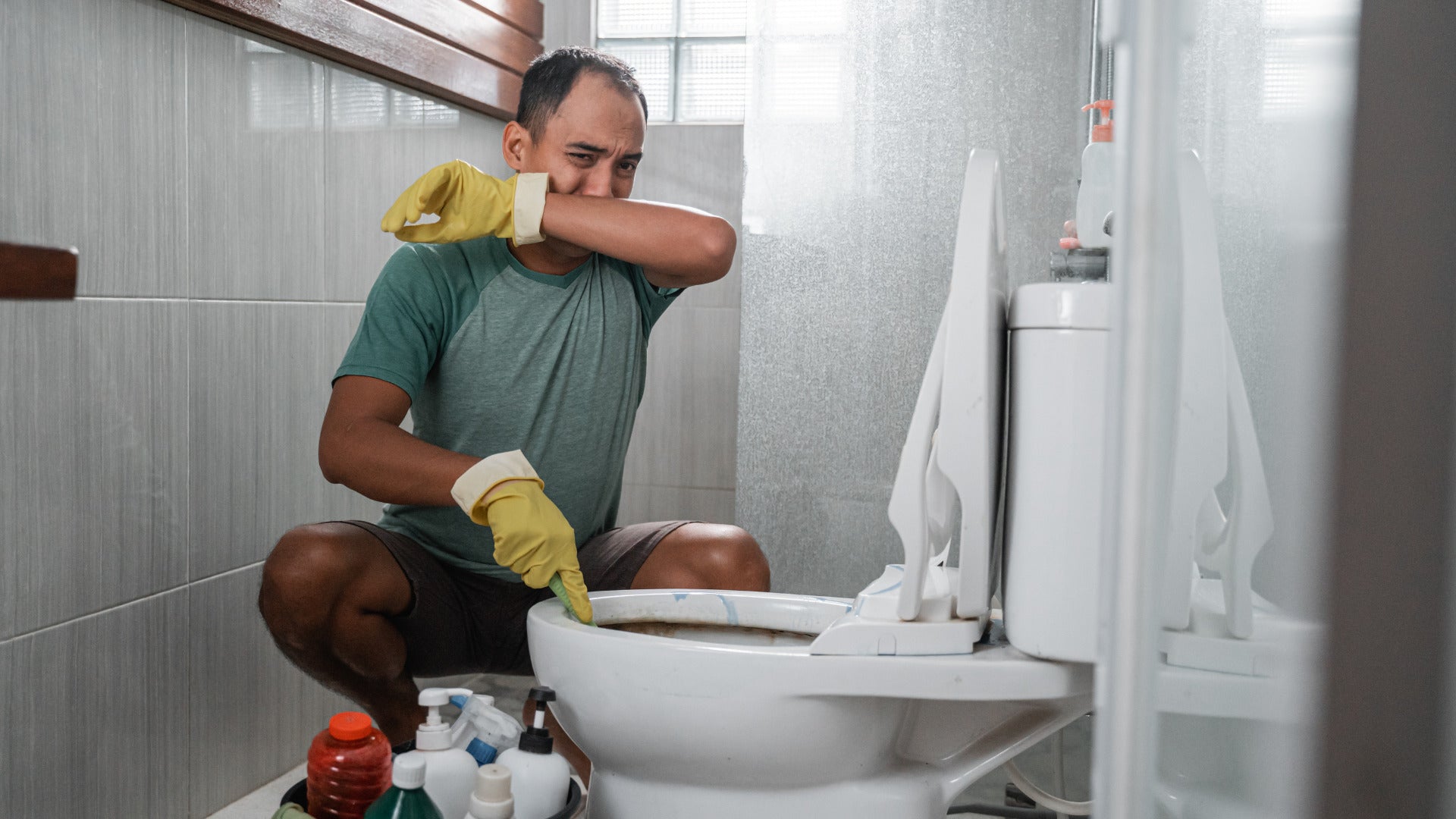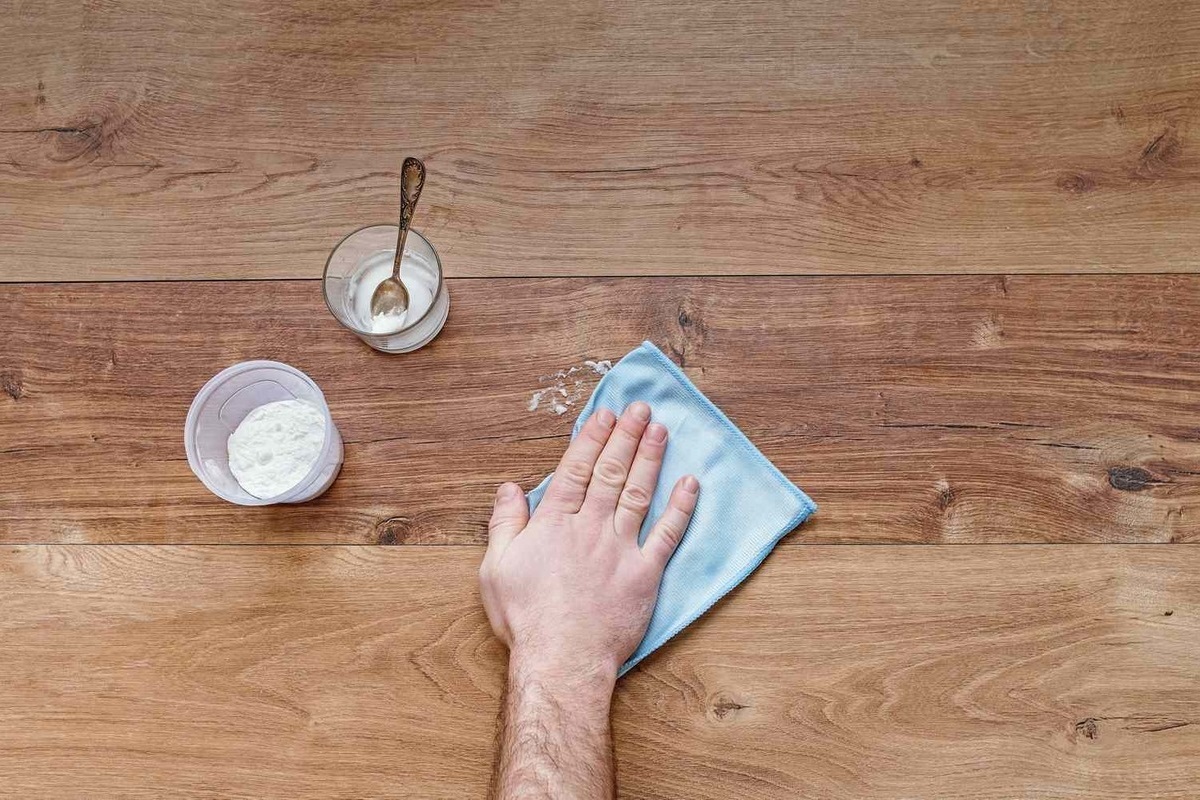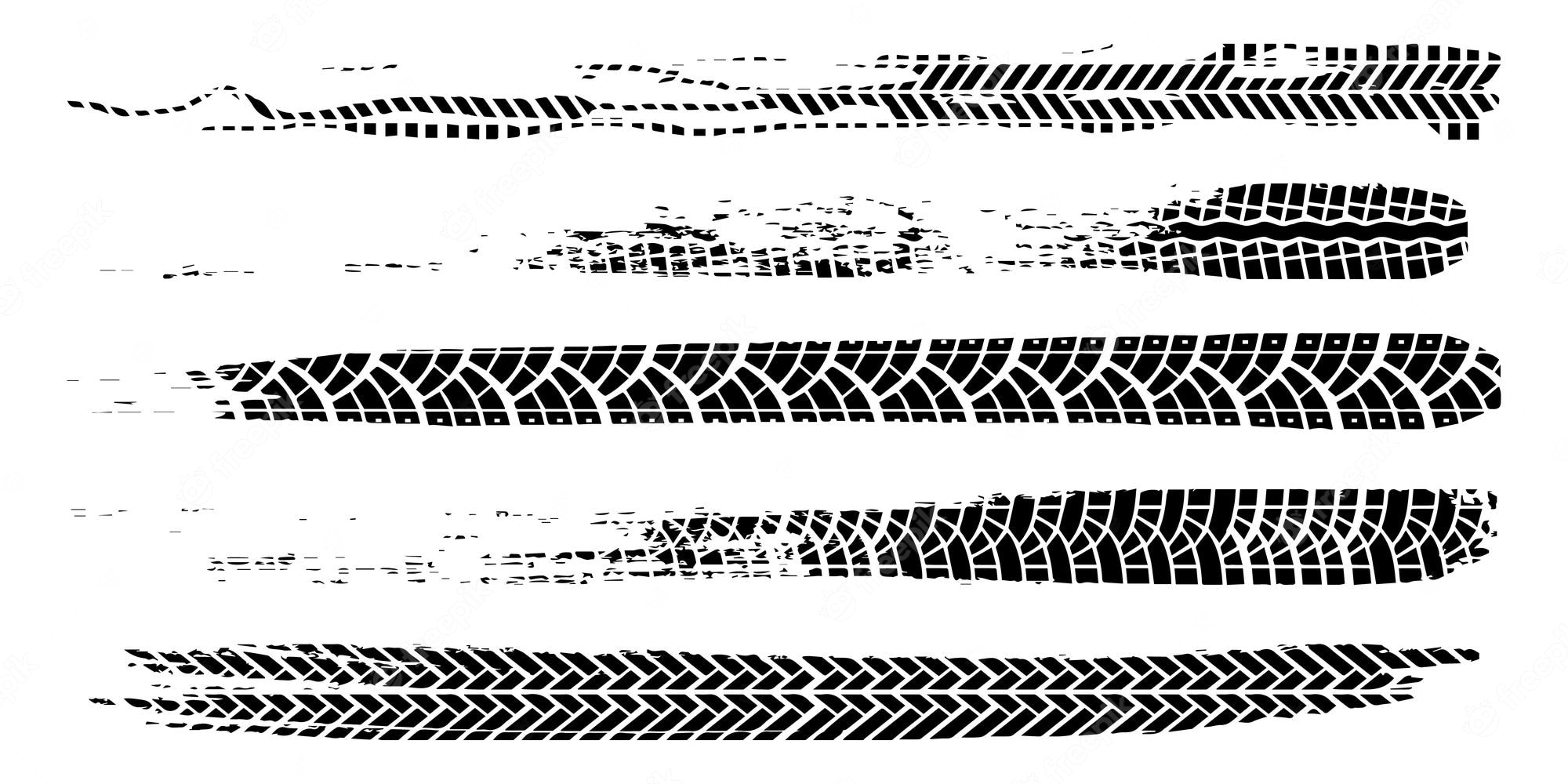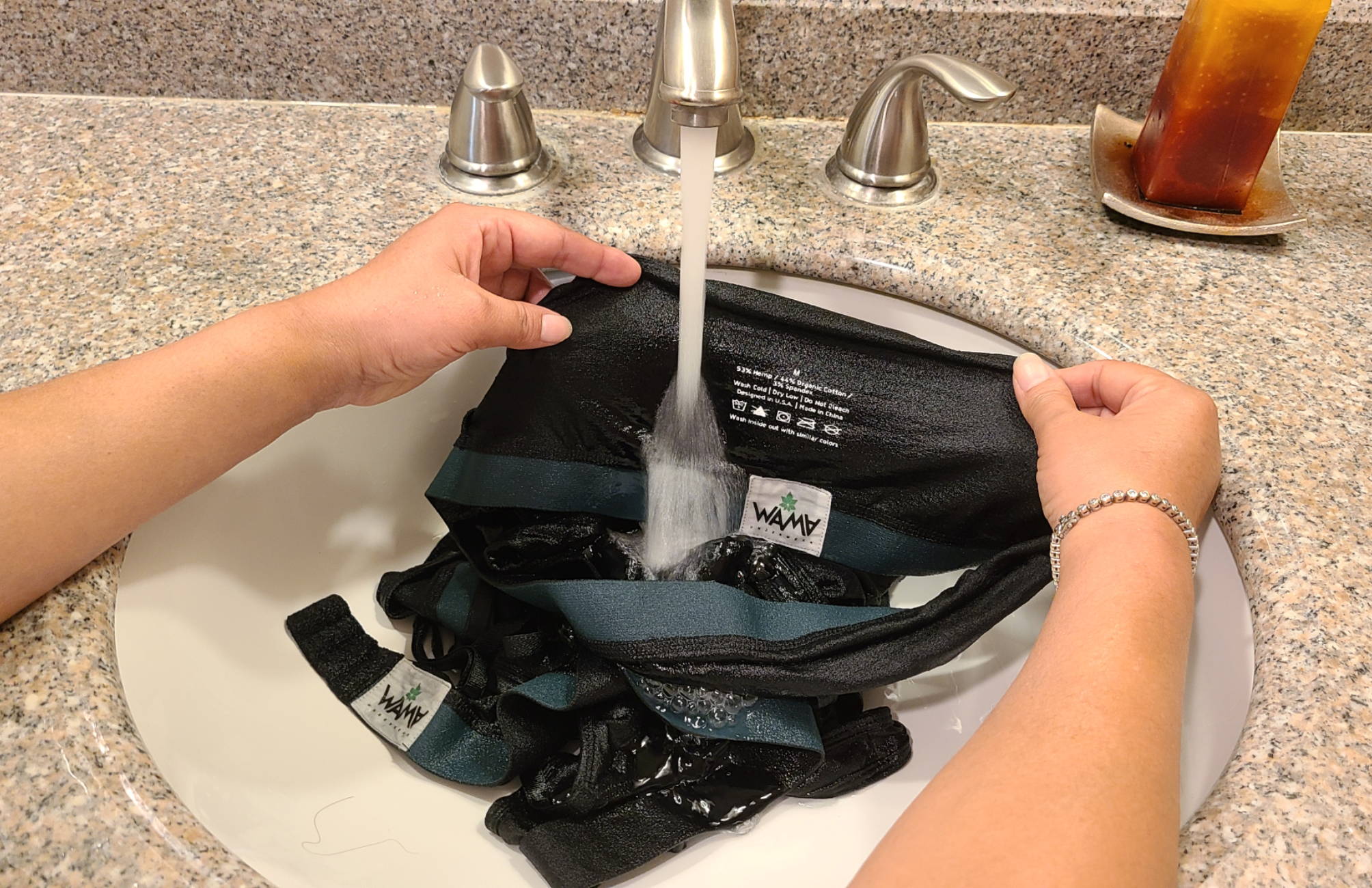Home>How-to Guides>For All>How To Stop My Skid Marks


For All
How To Stop My Skid Marks
Published: July 31, 2023
Learn effective methods to prevent and eliminate skid marks with comprehensive tips and advice for all. Put an end to embarrassing situations and regain your confidence today!
(Many of the links in this article redirect to a specific reviewed product. Your purchase of these products through affiliate links helps to generate commission for Under-tec.com, at no extra cost. Learn more)
Table of Contents
Introduction
Skid marks, those unwelcome stains that can appear on our underwear or bedding, can be both embarrassing and frustrating to deal with. Whether it’s a one-time occurrence or a recurring problem, it’s common to wonder how to prevent them and keep our confidence intact. Skid marks can happen to anyone, regardless of age or gender, and can be caused by a variety of factors.
In this article, we will explore the common causes of skid marks and provide helpful tips on how to prevent them. We’ll also discuss proper hygiene practices, choosing the right underwear, and handling stains on clothing and bedding. Additionally, we’ll talk about when it might be necessary to seek medical advice for persistent skid marks.
Dealing with skid marks can be a sensitive topic, but it’s important to remember that you’re not alone in facing this issue. With the right information and strategies, you can minimize or even eliminate skid marks from your life, allowing you to feel more confident and comfortable in your daily activities.
Now, let’s dive into the details of understanding skid marks and the various ways to prevent them.
Understanding Skid Marks
Skid marks, also known as fecal streaks or stains, are the result of involuntary soiling or leakage of feces that leaves visible marks on underwear or bedding. They can vary in severity, from faint discoloration to more pronounced stains, and can be accompanied by an unpleasant odor. While skid marks can be embarrassing, it’s essential to understand that they are a common issue that many people experience at some point in their lives.
The main cause of skid marks is typically poor bowel control or incomplete evacuation. This can occur due to various factors, including diet, hydration levels, medication side effects, or underlying health conditions. Digestive disorders like irritable bowel syndrome (IBS) or inflammatory bowel disease (IBD) can contribute to increased instances of skid marks. Additionally, constipation or diarrhea can also play a role in their occurrence.
It’s important to note that skid marks are not always an indication of a serious medical condition. However, in some cases, they can be a symptom of underlying health issues such as fecal incontinence, anal sphincter dysfunction, or nerve damage. If you regularly experience skid marks or if the problem persists despite lifestyle changes, it may be wise to consult a healthcare professional for further evaluation and guidance.
Having a clear understanding of the causes behind skid marks is crucial in finding effective prevention strategies. In the next section, we will explore some common causes of skid marks and provide tips on how to prevent them from occurring in the first place.
Common Causes of Skid Marks
Skid marks can be caused by a variety of factors, ranging from dietary habits to health conditions. Understanding these common causes can help you identify the root of the issue and take steps towards preventing skid marks.
1. Diet: Your diet plays a significant role in bowel movements and can contribute to the occurrence of skid marks. Foods that are high in fat, dairy, or fiber can cause loose stools or diarrhea, increasing the chances of leakage. It’s essential to maintain a balanced diet that includes plenty of fruits, vegetables, and whole grains to promote regular and healthy bowel movements.
2. Hydration: Inadequate hydration can lead to constipation, which can result in harder stools that are more difficult to control. It’s important to drink enough water throughout the day to keep your body properly hydrated and aid in smooth bowel movements.
3. Medications: Certain medications, such as antibiotics, laxatives, or antidiarrheal drugs, can affect bowel movements and potentially lead to skid marks. If you suspect that a medication you’re taking is contributing to the problem, consult your healthcare provider for alternative options or strategies to manage any side effects.
4. Underlying Health Conditions: Skid marks can be a symptom of underlying health conditions, such as irritable bowel syndrome (IBS), inflammatory bowel disease (IBD), or hemorrhoids. These conditions can affect bowel control and result in leakage. If you suspect you may have an underlying health condition, it’s important to consult with a healthcare professional for an accurate diagnosis and appropriate treatment.
5. Poor Bowel Habits: Ignoring the urge to have a bowel movement or rushing through the process can lead to incomplete evacuation, which increases the chances of skid marks. It’s important to listen to your body and establish regular bathroom habits by allowing yourself enough time to properly empty your bowels.
6. Stress and Anxiety: High levels of stress and anxiety can affect bowel movements and contribute to digestive issues, including skid marks. Finding healthy coping mechanisms for stress, such as exercise, relaxation techniques, or seeking support from a therapist, can help manage this potential cause.
Remember: Everyone’s body and situation are unique, so it’s important to identify the specific factors that contribute to your skid marks. This will allow you to develop personalized prevention strategies. In the next section, we will discuss some practical tips on how to prevent skid marks and maintain good hygiene practices.
Tips for Preventing Skid Marks
Preventing skid marks involves adopting good hygiene practices, making lifestyle changes, and taking proactive steps to maintain bowel health. Here are some effective tips to help you minimize the occurrence of skid marks:
1. Practice Good Bathroom Habits: Establish a regular bathroom routine and listen to your body’s natural signals. Avoid resisting the urge to have a bowel movement and take your time to ensure complete evacuation. This can help reduce the chances of residual stool and potential skid marks.
2. Maintain a Healthy Diet: Consume a balanced diet rich in fiber, vegetables, and whole grains to promote regular bowel movements and prevent constipation or diarrhea. Avoid excessive consumption of fatty or greasy foods, as they can contribute to loose stools and potential leakage.
3. Stay Hydrated: Drinking an adequate amount of water throughout the day helps keep stools soft and prevents constipation. Aim to drink at least 8 glasses (64 ounces) of water daily, or adjust the amount based on your individual needs and activity level.
4. Manage Stress and Anxiety: Stress can affect digestion and lead to bowel irregularities, including skid marks. Find healthy ways to manage stress, such as practicing relaxation techniques, engaging in regular exercise, or seeking support from a therapist or counselor.
5. Practice Proper Hygiene: After a bowel movement, clean the anal area thoroughly with gentle wipes or moist toilet paper. Avoid using rough or dry toilet paper, as it can cause irritation or leave residue. Consider using a bidet or bidet attachment for a more thorough cleaning.
6. Choose the Right Underwear: Opt for underwear made from breathable fabrics like cotton, which helps prevent excessive sweating and promotes better airflow. Avoid tight-fitting or synthetic materials, as they can contribute to moisture buildup and increase the risk of skid marks.
7. Use Protective Products: For added protection, you may consider using disposable or reusable liners or pads designed specifically for managing skid marks. These products can absorb any potential leakage and provide a sense of security throughout the day.
8. Seek Medical Advice: If skid marks persist despite lifestyle changes and preventive measures, it’s important to consult a healthcare professional. They can assess any underlying medical conditions, provide appropriate treatment, and suggest further strategies based on your individual needs.
Remember: Prevention is key when it comes to managing skid marks. By adopting these tips and making necessary adjustments to your lifestyle and hygiene practices, you can minimize the occurrence of skid marks and maintain better bowel health.
Proper Hygiene Practices
Maintaining proper hygiene is essential for preventing skid marks and ensuring overall cleanliness and comfort. Here are some important hygiene practices to incorporate into your daily routine:
1. Thoroughly Clean the Anal Area: After a bowel movement, it is crucial to clean the anal area thoroughly. Use gentle wipes, moist toilet paper, or a bidet to ensure effective cleansing. Avoid using rough or dry toilet paper, as it can cause irritation or leave behind residue.
2. Use Mild Soap: When washing the anal area, use a mild, fragrance-free soap to avoid irritation. Harsh soaps or those containing strong fragrances can disrupt the delicate balance of the skin and cause discomfort.
3. Pat Dry Gently: After cleaning, pat the anal area dry with a soft, clean towel. Avoid rubbing vigorously, as this can cause irritation or damage to the sensitive skin in the area.
4. Wear Clean Underwear: Regularly changing into clean underwear helps maintain good hygiene and prevents the buildup of sweat, bacteria, and odor. Choose underwear made from breathable fabrics like cotton, which allows for better airflow and reduces moisture accumulation.
5. Avoid Tight-Fitting Clothing: Tight-fitting clothing can contribute to increased sweating and moisture buildup in the anal area, leading to a higher risk of skid marks. Opt for loose-fitting, breathable clothing that allows for better ventilation and reduces friction.
6. Launder Underwear Properly: When washing stained underwear, it’s important to follow proper laundering practices. Rinse the stained area with cold water before washing to help remove any residual marks. Use a stain remover or pre-treatment product if necessary. Wash underwear in hot water with a quality detergent to ensure thorough cleaning.
7. Allow Adequate Drying Time: After washing and drying laundered underwear, ensure that it is completely dry before wearing it again. Moisture trapped in the fabric can contribute to bacterial growth and potential odors. Consider using a drying rack or hanging underwear in a well-ventilated area to facilitate quicker drying.
8. Maintain Overall Body Hygiene: In addition to proper anal hygiene, it’s important to maintain overall body cleanliness and hygiene. Regularly shower or bathe using mild soap, paying attention to all areas of the body. Keeping the entire body clean helps reduce the risk of bacterial buildup and unpleasant odors.
Remember: By incorporating these proper hygiene practices into your daily routine, you can minimize the chances of skid marks and promote overall cleanliness and comfort.
Choosing the Right Underwear
The type of underwear you choose can play a significant role in preventing skid marks and promoting better hygiene. Here are some important factors to consider when selecting the right underwear:
1. Breathable Fabrics: Opt for underwear made from breathable fabrics like cotton. Cotton allows for better airflow and moisture absorption, reducing the risk of excessive sweating and potential skid marks. Avoid synthetic materials that can trap moisture and contribute to bacterial growth.
2. Proper Fit: Ensure that your underwear fits well and provides enough coverage. Tight-fitting underwear can increase friction and contribute to sweat accumulation, making it more susceptible to skid marks. At the same time, overly loose underwear may not provide proper support and can cause discomfort.
3. Moisture-Wicking Properties: Look for underwear specifically designed with moisture-wicking properties. These types of fabrics help draw sweat away from the skin, keeping you dry and reducing the likelihood of skid marks.
4. Consider Liners or Pads: If you are particularly prone to skid marks, consider using disposable or reusable liners or pads designed to absorb any potential leakage. These products can provide an additional layer of protection and peace of mind.
5. Change Frequently: Regularly change your underwear to maintain good hygiene. This is especially important if you have experienced skid marks. Changing into clean underwear helps prevent the buildup of sweat, bacteria, and odor, reducing the risk of skid marks.
6. Avoid Tight Elastic Bands: Elastic bands that are too tight can contribute to irritation and discomfort, as well as restrict proper airflow. Choose underwear with comfortable, non-constricting waistbands that stay secure without digging into the skin.
7. Consider Full Coverage Styles: Full coverage underwear styles, such as briefs or boyshorts, provide better support and coverage, reducing the chances of leakage. They offer more protection and can help prevent skid marks from occurring.
8. Launder Properly: Pay attention to the proper care and laundering instructions for your underwear. Wash them in hot water with a quality detergent to ensure thorough cleaning. Avoid using harsh chemicals or fabric softeners that can irritate the skin.
Remember: When it comes to preventing skid marks, choosing the right underwear is essential. By opting for breathable fabrics, proper fit, and employing good laundering practices, you can help minimize the chances of skid marks and maintain better overall hygiene.
Handling Stains on Clothing
Dealing with stains on clothing, particularly those caused by skid marks, can be challenging. However, with the right approach and prompt action, you can effectively remove or minimize the appearance of these stains. Here are some tips for handling stains on clothing:
1. Act Fast: It’s important to tackle the stain as soon as possible to prevent it from setting into the fabric. The longer the stain sits, the more difficult it can be to remove.
2. Rinse with Cold Water: Start by rinsing the stained area under cold running water. This can help remove any excess fecal matter and prevent the stain from spreading further.
3. Pre-Treat the Stain: Apply a stain remover or pre-treatment product directly to the stained area. Gently work the product into the fabric using your fingers or a soft brush. Allow it to sit for the recommended amount of time before moving to the next step.
4. Launder the Clothing: Wash the stained clothing in the washing machine using hot water and an appropriate detergent. Follow the care instructions on the garment’s label. If the fabric is delicate or requires special care, consider hand-washing the clothing instead.
5. Check for Stain Removal: After laundering, inspect the clothing to determine if the stain has been fully removed. If the stain persists, avoid drying the clothing, as heat can set the stain. Instead, repeat the stain removal process or seek professional assistance.
6. Consider Using Stain Removers: If traditional stain removal methods do not fully remove the stain, consider using specialized stain removers formulated for organic stains. Follow the product’s instructions carefully and test it on a small, inconspicuous area of the fabric first to ensure compatibility.
7. Dry Properly: Once the stain is removed or improved, allow the clothing to air dry. Avoid using a dryer until you are confident that the stain has been fully eliminated. Heat from the dryer can make the stain more stubborn and difficult to remove.
8. Seek Professional Help, If Needed: In some cases, professional dry cleaning or stain removal services may be necessary to effectively treat and remove stubborn stains. If your efforts to remove the stain are unsuccessful, consult with a trusted dry cleaner or textile expert for further assistance.
Remember: Prompt action, using appropriate stain removal techniques, and avoiding heat are key to handling stains on clothing caused by skid marks. While some stains may be more challenging to remove, following these tips can help minimize their appearance, ensuring your clothing remains fresh and stain-free.
Dealing with Skid Marks on Bedding
Skid marks on bedding can be frustrating and embarrassing, but with the right approach, you can effectively manage and minimize their occurrence. Here are some tips for dealing with skid marks on bedding:
1. Act quickly: As soon as you notice skid marks on your bedding, it’s important to address it promptly. The longer the stain sits, the more difficult it can be to remove.
2. Remove any Solid Matter: Using disposable gloves or a tissue, gently remove any solid matter from the bedding. Be careful not to spread the stain further or rub it into the fabric.
3. Pre-Treat the Stain: Pre-treat the stained area with a stain remover or laundry detergent. Apply the product directly to the stain and gently rub it in using a clean cloth or a soft brush. Allow it to sit for the recommended amount of time before proceeding.
4. Launder the Bedding: Wash the bedding in the washing machine according to the care instructions on the label. Use hot water and a high-quality detergent to ensure thorough cleaning. If the fabric is delicate or requires special care, consider using a gentle or delicate cycle.
5. Inspect for Remaining Stains: After laundering, inspect the bedding to check if the stain has been completely removed. If there are still residual marks, avoid drying the bedding as heat can set the stain. Repeat the pre-treatment and laundering process or seek additional stain removal techniques.
6. Consider Enzyme-Based Cleaners: Enzyme-based cleaners can be particularly effective in breaking down and removing organic stains like skid marks. Look for cleaners specifically designed for removing stains from fabric and follow the instructions on the product label.
7. Sun-Drying: Allow the bedding to air dry in direct sunlight if possible. Sunlight can have a natural bleaching effect and help further fade any remaining stains. If direct sunlight is not available, use a drying rack or air-dry the bedding in a well-ventilated area.
8. Use Protective Layers: To prevent skid marks from reaching your bedding, consider using protective layers such as waterproof mattress protectors or absorbent bed pads. These can provide an additional barrier and make cleaning easier.
Remember: Dealing with skid marks on bedding requires prompt action and appropriate stain removal techniques. By acting quickly, following proper pre-treatment and laundering steps, and considering preventive measures, you can effectively manage skid marks on your bedding, ensuring a fresh and clean sleeping environment.
Seeking Medical Advice
In most cases, skid marks are a common occurrence and can be managed through lifestyle changes and proper hygiene practices. However, persistent or recurrent skid marks may indicate an underlying medical condition that requires professional evaluation. Seeking medical advice is important to ensure proper diagnosis and appropriate treatment. Here are some reasons why you should consider consulting a healthcare professional:
1. Chronic Skid Marks: If you experience persistent or recurrent skid marks despite making lifestyle changes and following preventive measures, it is wise to consult a healthcare professional. Chronic skid marks may be a sign of an underlying medical condition that requires further investigation.
2. Changes in Bowel Habits: If you notice significant changes in your bowel habits alongside skid marks, such as persistent diarrhea, constipation, or increased urgency, it may indicate an underlying digestive disorder or gastrointestinal issue. Medical evaluation can help identify the root cause and guide appropriate treatment.
3. Blood in Stool: If you notice blood in your stool or on your underwear along with skid marks, it is crucial to seek immediate medical attention. This may indicate bleeding in the digestive tract, which can be a serious condition requiring urgent medical assessment.
4. Persistent Discomfort or Pain: Skid marks accompanied by discomfort, pain, or other distressing symptoms, such as abdominal pain, rectal pain, or frequent urination, may be indicative of an underlying medical condition. Seeking medical advice can help identify the cause and provide appropriate treatment.
5. Impact on Quality of Life: Skid marks can have a significant impact on your quality of life, causing embarrassment, anxiety, or social discomfort. If skid marks are affecting your emotional well-being or daily activities, consulting with a healthcare professional can help address your concerns and provide support.
6. Advice on Lifestyle Modifications: A healthcare professional can provide personalized advice on dietary modifications, fluid intake, and lifestyle changes to manage skid marks effectively. They can guide you in making the necessary adjustments to improve bowel control and prevent skid marks.
Remember: Seeking medical advice for persistent or concerning skid marks can help identify underlying causes and provide appropriate treatment. A healthcare professional can offer guidance, support, and strategies to help you manage skid marks and maintain better bowel health.
Conclusion
Skid marks can be a common and troublesome issue, but they’re not something you have to live with indefinitely. By understanding the causes behind skid marks and implementing preventive measures, you can minimize their occurrence and maintain better hygiene. Remember, skid marks can be caused by factors such as diet, hydration, stress, and underlying health conditions. It’s important to practice good bathroom habits, adopt a healthy diet, and manage stress levels to promote regular bowel movements and reduce the risk of skid marks.
In addition, proper hygiene practices, including thorough cleaning of the anal area, choosing the right underwear made from breathable fabrics, and handling stains promptly can help maintain cleanliness and prevent skid marks. If your skid marks persist despite lifestyle changes, it may be necessary to seek medical advice. A healthcare professional can provide a comprehensive evaluation, offer guidance on potential underlying conditions, and suggest appropriate treatment options.
Dealing with skid marks can be a sensitive topic, but it’s important to remember that you are not alone. With the right information, strategies, and support, you can take control of your hygiene and achieve the confidence and comfort you deserve. Remember to be patient with yourself as you experiment with different prevention techniques and seek the guidance of healthcare professionals when needed.
By embracing these tips and making necessary adjustments to your lifestyle and hygiene practices, you can minimize the occurrence of skid marks and maintain better overall bowel health. Take the opportunity to incorporate these strategies into your daily routine and enjoy the peace of mind that comes with a fresh and clean feeling. Don’t let skid marks hold you back – take charge and live confidently.










